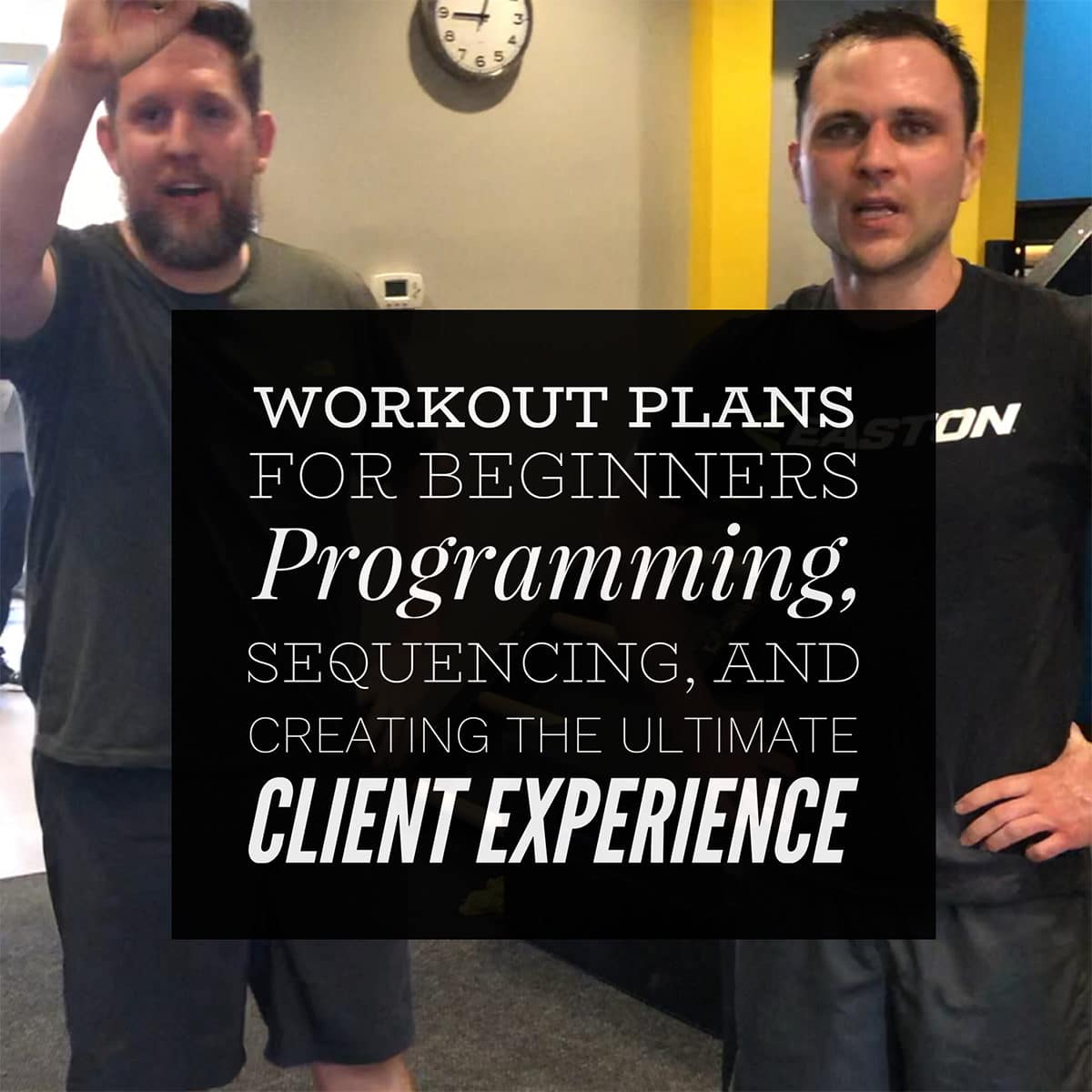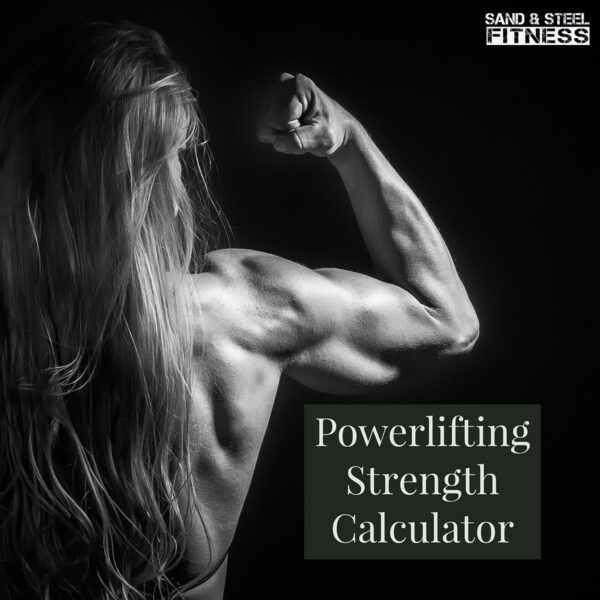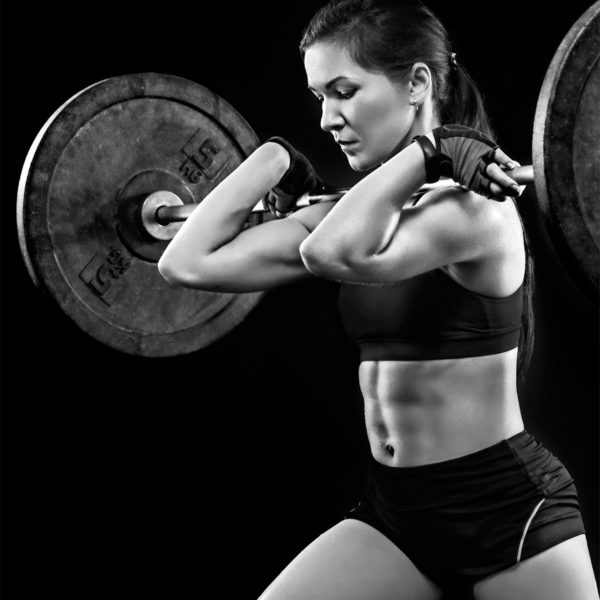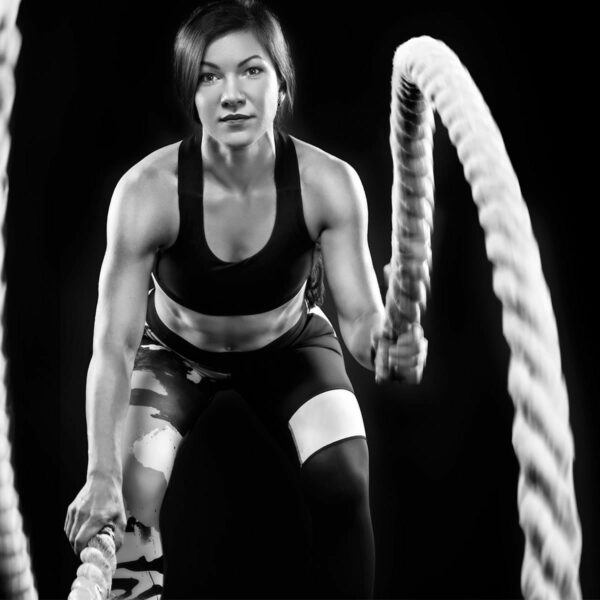This article is designed for personal trainers looking to get better at writing and designing beginner workout plans. More specifically, this video post discusses how to design functional strength training workouts for beginners.
Workouts Program Spectrum
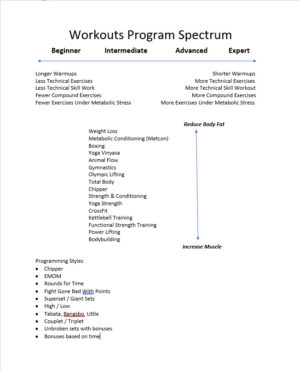 The document on the right shows many of the major types of weight loss and strength training programs available. Having coached 1000s of clients across many different fitness levels and goals, I can safely say that the following programming types will be sufficient for 99% of clients you might coach. Start with the fundamentals, and master them before moving on to more complex patterns.
The document on the right shows many of the major types of weight loss and strength training programs available. Having coached 1000s of clients across many different fitness levels and goals, I can safely say that the following programming types will be sufficient for 99% of clients you might coach. Start with the fundamentals, and master them before moving on to more complex patterns.
Structuring a Workout Plan
There are 4 foundational structures for building a workout program for beginners. The Functional Strength Training model, the Bodybuilding Split Model, the Anatomy Trains Model, and the Yoga Model. These 4 foundational structures are different ways of presenting the same information. FST is great for strength and building stability. Bodybuilding great for hypertrophy. Anatomy Trains is great for screening and spotting weaknesses. Yoga is great for stretching and building flexibility. In terms of treatment and execution, Functional Strength Training workouts generally incorporate 3-5 of the patterns per workout. Yoga is generally 5-9 of the patterns. Bodybuilding is generally one pattern (split) per workout. Anatomy Trains is generally 1 or 2 patterns (meridians) per treatment.

4 Ways to Design a Beginner Program
The Functional Strength Training Model
 Power and strength can be broken down into the below distinct patterns movement. Working all of these patterns helps build a consistent base of strength for more advanced forms of exercise like CrossFit.
Power and strength can be broken down into the below distinct patterns movement. Working all of these patterns helps build a consistent base of strength for more advanced forms of exercise like CrossFit.
- Squat. E.g. Jump, Front Squat
- Lunge: E.g. Step-ups, Side Lunge
- Hinge: E.g. Swing, Deadlift
- Pull: E.g. Pull-ups, Cleans
- Push: E.g. Push Press, Bench Press
- Core Flexion / Core Extention
- Lateral Flexion / Core Rotation
- Hip and Shoulder Rotation
- Hand & Foot Plantar and Dorsiflexion (Correctives as needed)
Bodybuilding 5-Day Split Model
Bodybuilding works primarily by working compound to isolation exercises. This is a proven model for building muscle mass. There are many different structures one can pick for the splits. One must decide why they are pairing the items together. For a new client just beginning bodybuilding, the following split is ideal and it provides a complete mix of exercises without overtraining anything.
- Back, Biceps, Wrist Flexion, Core Extension
- Anterior Legs, Core Flexion, and Shins
- Chest, Triceps, Wrist Extension, Core Flexion
- Posterior Legs, Core Extension, and Calves
- Arms and Shoulders, Core Rotation, Lateral Flexion
The Myer’s Anatomy Trains Model
What Myers (and the other Muscle Chain people, like Mézières, GDS, Rosario, Busquet, and Souchard) teach us is that the body moves in planes of motions. Muscles work in different chains or systems. Strength, mobility, and stability are achieved by building strong neuromuscular connections in all these chains. Weak or disconnected hamstrings limit your fold. A weak deep front line weakens your lunge and lowers your maximal knee raise. To improve stability and mobility, you need to look beyond what the client tells you feels tight and test the function and connection of all muscles in the pattern. Find the silent, cramped weak one and work that loosen that one. Strengthen the antagonist. Tight Chest? Strengthen the rear delts.
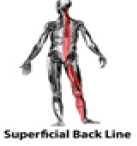 The Superficial Back Line: Muscles and tendons that are responsible for movement and stability in the sagittal plane: move backwards in the plane or resist movement forward in the sagittal plane.
The Superficial Back Line: Muscles and tendons that are responsible for movement and stability in the sagittal plane: move backwards in the plane or resist movement forward in the sagittal plane.
- Sample Yoga Positions that Stretch Muscles in this Meridian Include: Uttanasana (forward fold), Adho Mukanasa (down dog)
- Sample Exercises that Use Muscles in this Meridian Include: Deadlifts and GHD Ham Raises
- Sample Muscles of the Superficial Back Line Include: Calves, Hamstrings, Erector Spinae, Rhomboids, Spleni Muscles, Serratus Posterior.
 The Superficial Front Line: Muscles and tendons that are responsible for movement and stability in the sagittal plane: move forwards in the plane or resist movement backwards in the sagittal plane.
The Superficial Front Line: Muscles and tendons that are responsible for movement and stability in the sagittal plane: move forwards in the plane or resist movement backwards in the sagittal plane.
- Sample Yoga Positions that Stretch Muscles in this Meridian Include: Setu Bandha Sarvangasana (Bridge Pose), Dhanurasana (Bow Pose), Ustrasana (Camel Pose).
- Sample Exercises that Use Muscles in this Meridian Include: Toes 2 Bar, Situps, V-ups
- Sample Muscles of the Superficial Back Line Include: Quads, Rectus Abdominis, Hip Flexors, etc.
-

Lateral Line The Lateral Line: Muscles and tendons that are responsible for movement and stability on the frontal plane.
- Sample Yoga Positions that Stretch Muscles in this Meridian Include: Ardha Chandrasana (Crescent Pose in Bikram), Parighasana (Gate Pose), Parsvakonasana (Extended Side Angle)
- Sample Exercises that Use Muscles in this Meridian Include: Side Steps, Lateral Lunges, Farmers Carries
- Sample Muscles of the Superficial Back Line Include: Iliobtiabial Tract, Pereoneals, External and Internal Intercostals, Sternocleidomastoid,
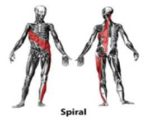 The Spiral Line: Muscles and tendons that are responsible for movement and stability on the transverse plane. The Meridian Lines are generally on the lateral part of the body crossing at the lumbar-thoracic junction.
The Spiral Line: Muscles and tendons that are responsible for movement and stability on the transverse plane. The Meridian Lines are generally on the lateral part of the body crossing at the lumbar-thoracic junction.
- Sample Yoga Positions that Stretch Muscles in this Meridian Include: Utthita Trikonasa (Triangle Pose) and Ardha Matsyendrasana (Seated Spinal Twist)
- Sample Exercises that Use Muscles in this Meridian Include: Throwing, Kicking, Boxing, Rip Trainer Exercises, Renegade Row
- Sample Muscles includes: Spienius Capitis and Cervicis, Erector Spinae, Rhomboidei, Obliquus internus, Obliquus Externus, Serratus Anterior, Biceps Femoris, Tensor Fascia Latae, Tibialis Anterior, and Peroneus Longus.
 The Functional Lines: Muscles and tendons that are responsible for movement and stability on the transverse plane. Provides contralateral counterbalance and stability in running, lunges, etc. Functional Meridians Lines are generally on the medial part of the body
The Functional Lines: Muscles and tendons that are responsible for movement and stability on the transverse plane. Provides contralateral counterbalance and stability in running, lunges, etc. Functional Meridians Lines are generally on the medial part of the body
- Functional Front e.g. Pectoralis major, Adductor Longus
- Functional Back e.g. Latissimus dorsi, Gluteus Maximus, Vastus lateralis
- The Arm Lines
- Superficial Front Arm Line (SFAL) Pectoralis Major -> wrist flexors -> palmar hand
 Deep Front Arm Line (DFAL) – Pectoralis Minor -> Biceps -> Thenar (thumb) muscle extensors
Deep Front Arm Line (DFAL) – Pectoralis Minor -> Biceps -> Thenar (thumb) muscle extensors- Superficial Back Arm Line (SBAL) – Trapezius -> Deltoid-> wrist extensors
- Deep Back Arm Line (DBAL) – Rhomboids, Levator scapulae -> Rotator cuff -> triceps ->hypothenar muscles (pinky) – More myofascial crossover than legs (due to increased mobility in shoulder)
- The Deep Front Line: Muscles and tendons that are responsible for resisting movement and stability on the frontal plane.
 Sample Yoga Positions that Stretch Muscles in this Meridian Include: Baddha Konasana (Cobbler’s Pose), Malasana (Garland Pose), Upivista Konasana (Pancake Pose)
Sample Yoga Positions that Stretch Muscles in this Meridian Include: Baddha Konasana (Cobbler’s Pose), Malasana (Garland Pose), Upivista Konasana (Pancake Pose)- Sample Exercises that Use Muscles in this Meridian Include:
- Muscles of the Deep Front Line: Adductors, Scalenes, Quadratis Lumborum, Pectorus Major.
The Yoga Model:
- Standing Balance:
- Dancer Pose: Naṭarajasana
- Revolved Triangle: Parivitta Trikonasana
- Standing Splits: Urdhva Prasarita Eka Padasana
- Standing Hand to Toe: Hasta Padangusthasana
- Inversions
- Supported Shoulder Stand: Salamba Sarvangasana
- Unsupported Shoulder Stand: Niralamba Sarvaṅgasana
- Deaf Man’s: Karnapidasana
- Plow Pose: Halasana
- Arm Balance
- Crow: Bakāsana
- One Legged Crow: Eka Pāda Bakāsana
- Handstand: Adho Mukha Vṛkṣāsana
- Dangling Earing Pose: Lolasana
- Backbends
- Pigeon: Kapotasana
- Inverted Staff: Dvi Pada Viparīta Dandasana
- Wheel: Urdhva Dhanurasana
- Hip Openers
- Fire Log Pose: Agnistambhasana
- Wide-Angle Seated Forward Bend: Upavistha Konasana
- Frog Pose: Mandukasana
- Garland Pose: Malasana
- Lizard Lunge: Utthan Pristhasana
- Heart Openers
- Fish Pose: Matsyasana
- Camel Pose: Ustrasana
- Locust Pose: Salabhasana
- Wild Thing: Camatkarasana
- Folds
- Standing Forward Bend: Uttānāsana
- Rabbit: Sasangāsana
- Downward-Facing Dog: Adho Mukha Śvānāsana
- Twists
- Half Lord of the Fishes Pose: Ardha Matsyendrasana
- Marichi’s Pose: Marichyasana III
- Bharadvaja’s Twist: Bharadvajasana I
- Seated Poses
- Lotus Pose: Padmasana
- Head to Knee Pose: Janu Sirsasana
- Three Parts Forward Bend Pose: Triang Mukhaikapada Paschimottanasana
Building a Beginner Workout
Armed with one of the four structures above we can prepare a workout for a beginner. Since this particular program is designed to create strength and stability, we have opted to create a functional strength training workout. The below video takes you throught the thought process in generating the workout. Below the video is a copy of the workout.

Sample Workout for Beginners
Beginner Level. Functional Strength Training.
Total Body: Press. Pull. Hinge. Squat. Core Flexion, Resist Twist
Warmups: 3 rounds
- 20 arm circles,
- 10 lacrosse ball squeeze,
- 30 drummer cast,
- 20 club crunches
Barbell Bench
- 4 Sets of 12-16 Reps Medium Weight.
6 Rounds
- 45 Seconds Exercise Tubing Squat Hold Rows Light Weight,
- 20 Kettlebell 2-Hand Swing Medium Weight.
3 Rounds for Time
- 5 Inchworms
- 10 Side Kicks
Stretches and Cooldowns 2 rounds
- Chandrasana Bikram 45 seconds per side,
- Exercise Band Behind the back reach 45 seconds,
- Battlestar Tricep Smash 30 rolls with switching arm of the arm,
- E/B Tricep Stretch 30 seconds per arm.
